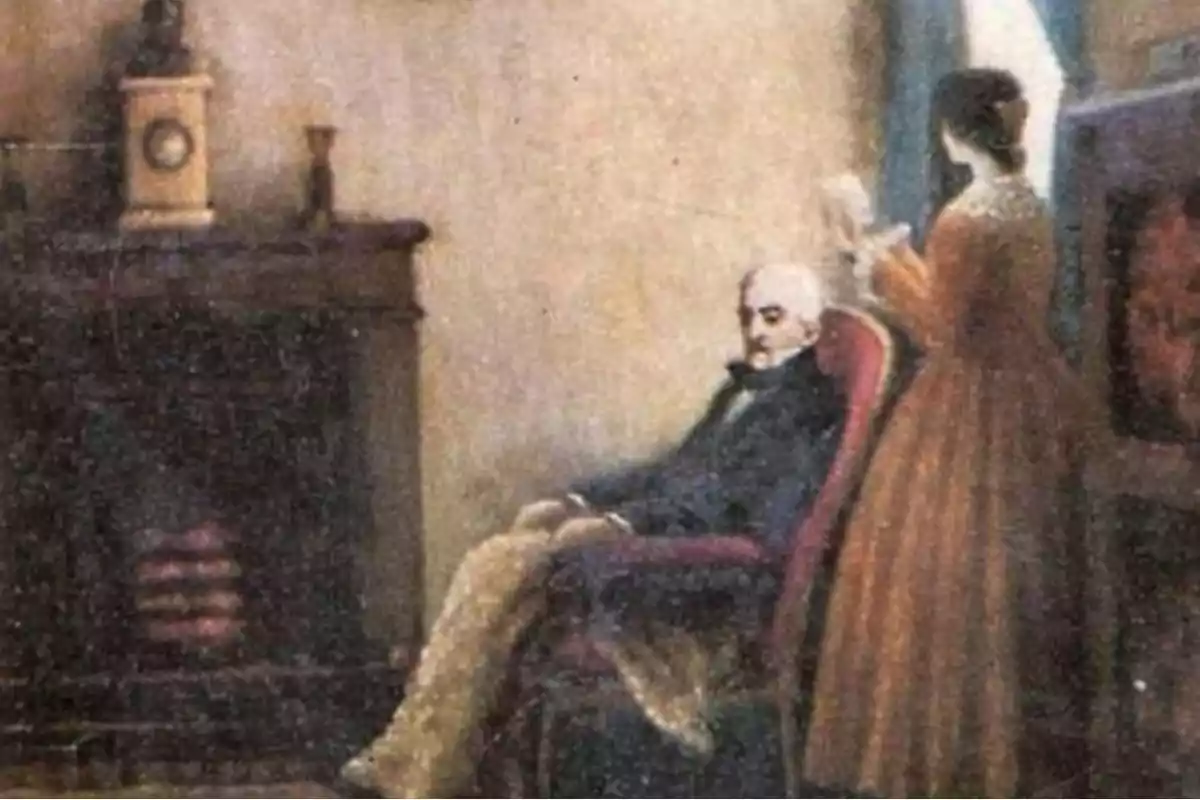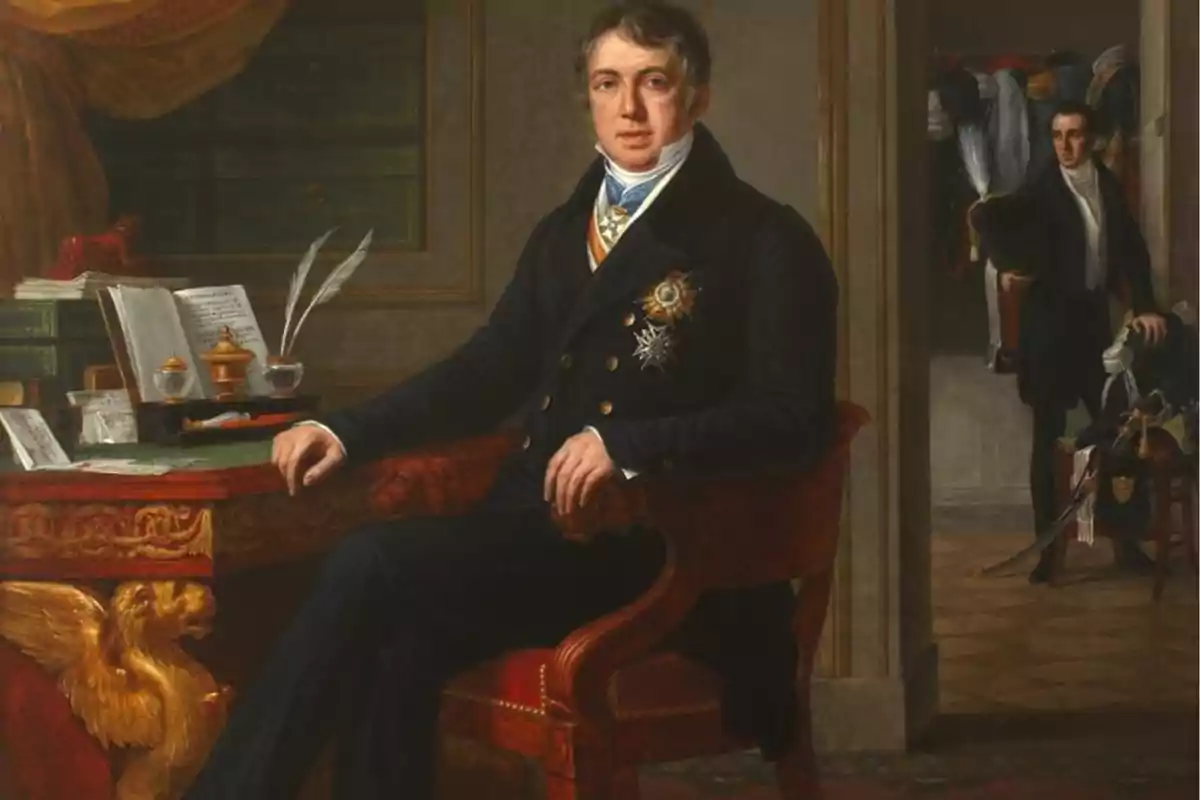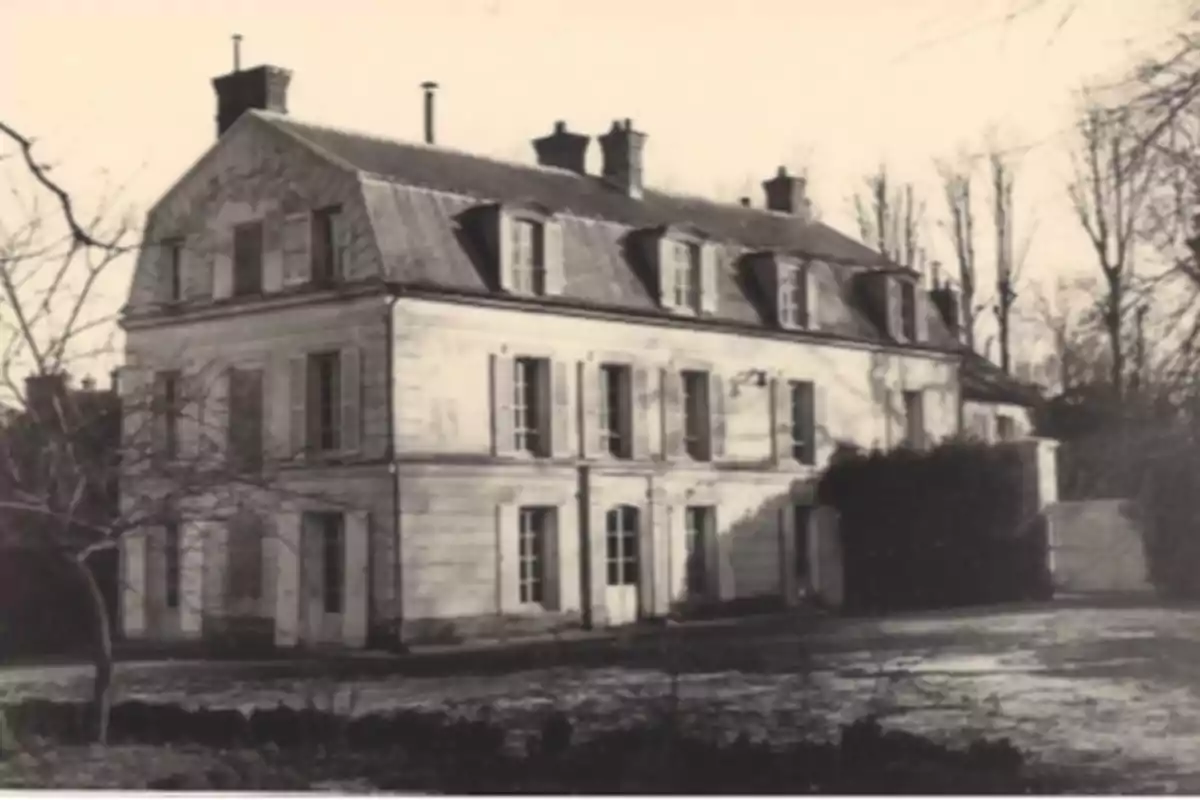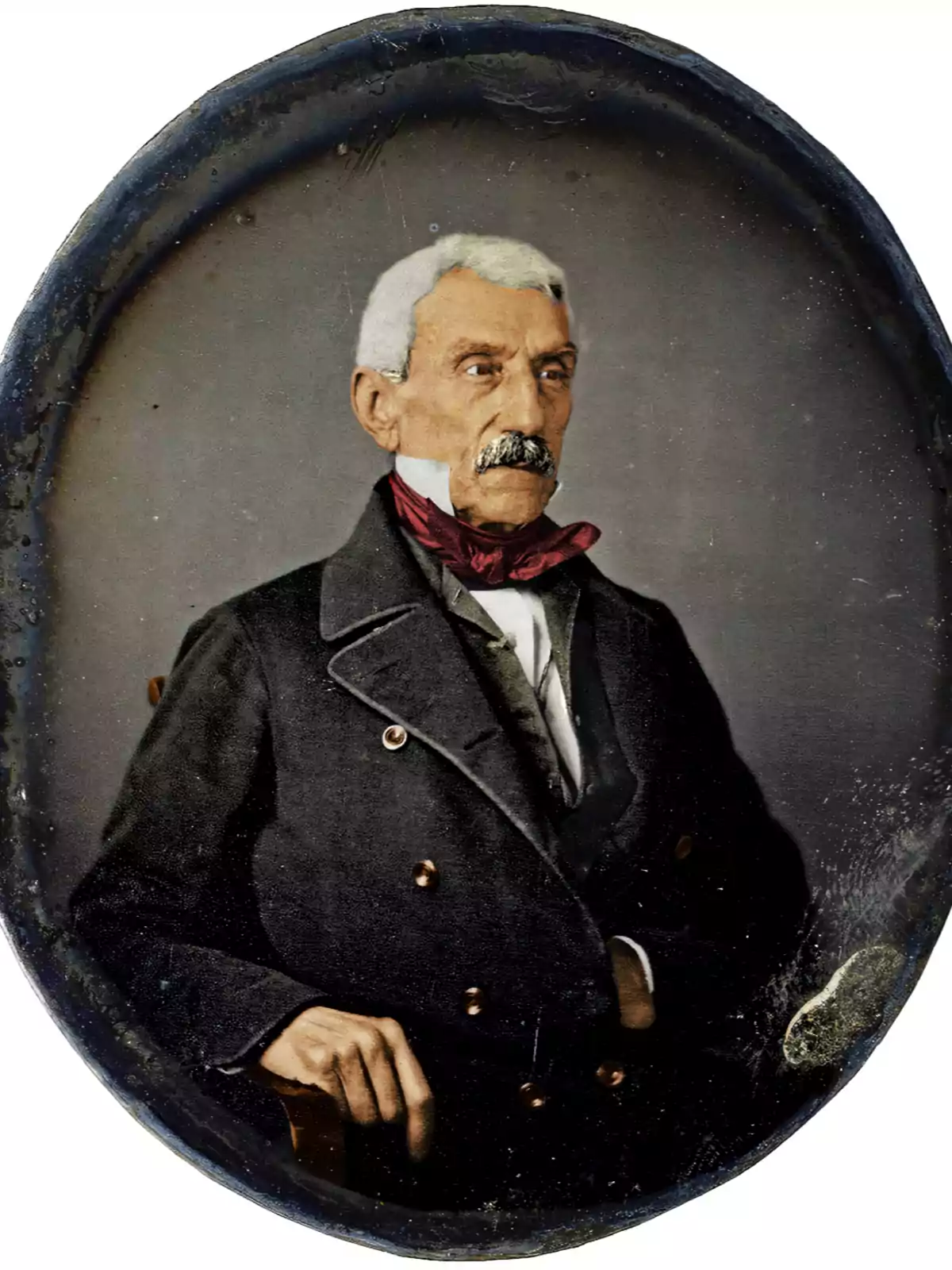
San Martín in Grand Bourg: this was the Liberator's life in France
San Martín lived in Grand Bourg, France, where he received Alberdi and other figures during his retirement years
After leaving South America for good, General José de San Martín first settled in Brussels (Belgium), and later moved to Paris a few years later, during which time he also took the opportunity to travel around Europe. Perhaps it was in the French capital that he once again met the Sevillian Alejandro Aguado y Ramírez, Marquis of the Marshes of the Guadalquivir; a former comrade-in-arms of his in the Spanish Army.
Indeed, Aguado had participated in the Spanish War of Independence, fighting against Napoleon, in the first and most significant battles of that conflict. However, after the fall of Seville to the French, perhaps due to his liberal ideas; Aguado switched to the side of the invaders; which earned him the label of "afrancesado." He served in the French forces until the end of the Napoleonic Wars. When Ferdinand VII returned to the throne, to avoid reprisals and being treated as a traitor, he emigrated to Paris; where, already as a civilian, perhaps thanks to his Jewish origin, he prospered in the business world of that era; and became the richest man in France. He was a great entrepreneur and prominent businessman, who invested in the most significant projects in foreign trade, infrastructure, public works, and banking in Western Europe. He became the most important banker of his time. He was a generous person, a distinguished patron and protector of artists, refugees, emigrants; as well as former friends, fellow countrymen, and compatriots of his.

Alejandro Aguado y Ramírez, Marquis of the Marshes of the Guadalquivir
At that time, the relationship between San Martín and Aguado became even closer. So much so that Aguado appointed San Martín as the executor of his substantial inheritance, as well as guardian of his three children and legatee of valuable jewels and personal decorations.
With Aguado's help, San Martín acquired, on April 25, 1834, a "maison" in the commune of Évry, 27 km (16.8 miles) from Paris. It was his famous "Grand Bourg" house, so named to distinguish it from a neighboring one: "Petit Bourg," where Aguado himself lived.
Grand Bourg was a comfortable country house, three stories high, with amenities to accommodate a family: on the ground floor there was a living room, the dining room, and the kitchen. The first floor had five rooms and the second, three. It was located on a large park of about one hectare (2.47 acres). It had an orchard with fruit trees, a garden, a greenhouse, and outbuildings for storing tools and gardening equipment. In that park, San Martín used to meet his friend, the Marquis, to share evenings and pleasant conversations. The Liberator enjoyed gardening in the green spaces of his property.
In time, his daughter Mercedes married Mariano Balcarce, son of his friend, Antonio González Balcarce, the general responsible for the first victory of the patriotic forces in Suipacha. Later, his granddaughters (Mercedes and Josefa) arrived; who also grew up in Grand Bourg.
In 1835, San Martín acquired a property in Paris, located on Rue Neuve Saint-Georges. From then on, the Liberator's life would take place between Grand Bourg and the French capital. The railway made it easy and quick to travel between both locations, in about two and a half hours.
The General spent most of his time at his country house, as he told Pedro Molina: "For more than three years I have lived in this wilderness; but since I have found the restoration of my health here and, on the other hand, the tranquility I enjoy here is more in keeping with my character and age, I prefer it to living in Paris, whose residence, after being detrimental to my health, I find suitable only for those who desire an active social life or are compelled to reside there for business: if, as I hope, the tranquility of our homeland is consolidated to the extent that I am assured I can spend my old age in peace, I will return to it with the greatest pleasure, for I desire nothing more than to die in its bosom."
His routine, as a good retired military man, was simple and almost Spartan. He would rise at dawn, prepare his breakfast, and then cut his tobacco, which he would later smoke in a pipe or a cornhusk. Afterwards, he would clean a piece from his weapons collection; do carpentry or gardening work. He also illustrated lithographs, with images of ships, seascapes, and rural scenes; which reminded him of his fondness for painting in his youth.

Grand Bourg House (France)
It was in Grand Bourg that San Martín received distinguished visitors, who remembered him. Juan Bautista Alberdi, Domingo Faustino Sarmiento, Felipe Varela, Félix Frías, and other prominent figures in our history.
What was San Martín like at that time? Nothing better than to turn to the Tucumán-born Alberdi, who will share with us the overwhelming emotion he felt upon meeting him; first at a friend's house in Paris; and then he will tell us his impressions when traveling, for the first time, by train to visit the Liberator; from the City of Light to the Ris station; and from there, by carriage, half an hour more, to the residence of Grand Bourg:
"Paris, September 14, 1843. On the first of September, at about 11 in the morning, I was at the house of my friend Mr. D. M. J. de Guerrico; with whom we were to attend the funeral of a daughter of Mr. Ochoa, a Spanish poet, at the Montmartre cemetery. While we waited for the time to leave, I was reading a translation of Lamartine, when Guerrico stood up, exclaiming: "General SAN MARTIN." I stood up, full of pleasant surprise, to see the great American celebrity I so longed to meet. My eyes, fixed on the door through which he was to enter, impatiently awaited the moment of his appearance. He finally entered, hat in hand; with the modesty and shyness of an ordinary man. How different I found him from the image I had formed, hearing the hyperbolic descriptions his admirers in America had given me of him!
For example: I expected him to be taller and he is only a little taller than men of average height. I thought he was an Indian, as I had so often been told; and he is nothing more than a man with a dark complexion, of the bilious temperament.

I supposed him to be stout; and although he is more so than when he waged war in America, he seemed rather thin to me; I thought his appearance and bearing should have something grave and solemn; but I found him lively and easy in his manners; and his gait, though dignified, was devoid of any hint of affectation. I was struck by his voice, notably deep and manly. He speaks without the slightest affectation, with all the plainness of an ordinary man. Seeing the way he regards himself, one would say that this man had done nothing remarkable in the world; because it seems he is the first to believe so.
I had heard that his health suffered greatly; but I was surprised to see him younger and more agile than all the generals I have known from the war of our independence, not excluding General Alvear, the youngest of all. General San Martín suffers in his health when he is inactive, and he recovers simply by getting into motion. From this, one can infer the fever for action that this extraordinary man must have possessed in the years of his tempestuous youth. His beautiful and well-proportioned head, which is not large, retains all his hair, now almost completely white; he doesn't wear sideburns or a mustache, although nowadays even the most peaceful old men wear them for fashion. His forehead, which doesn't indicate a great thinker, nevertheless promises a clear and lucid intelligence, a deliberate and bold spirit. His large black eyebrows rise toward the middle of his forehead whenever his eyes, still full of youthful fire, open wide. His nose is long and aquiline; his mouth small and richly toothed, is charming when he smiles; his beard is pointed.
He was dressed simply and properly, a black tie tied carelessly, a black silk vest, a frock coat of the same color, light blue mixed trousers, large shoes. When he stood up to say goodbye, I accepted and closed, with both my hands, the right hand of the great man who had wielded the liberating sword of Chile and Peru. At that moment, he was leaving for one of the trips he makes in the interior of France during the summer season.
Despite his long residence in Spain, his accent is the same as that of our men from America, his contemporaries. In his house, he speaks alternately Spanish and French, and often mixes words from both languages, which makes him say, quite wittily, that the day will come when he will be deprived of both, or will have to speak a patois of his own invention. He rarely, if ever, talks about politics. He never brings up, in conversation with indifferent people, his South American campaigns; however, in general, he likes to talk about military enterprises.
I had been invited by his excellent son-in-law, Mr. Don Mariano Balcarce, to spend a day at his country house in Grand Bourg, about six and a half leagues from Paris. This outing was to be all the more pleasant for me since I was to make it by railway, on which I had never traveled. At eleven o'clock on the appointed day, we went with my friend, Mr. Guerrico, to the steam carriage station of the Orleans line, behind the Jardin des Plantes. The train, which was to depart a few moments later, consisted of 25 to 30 carriages of three categories. Once the 800 to 1,000 people making the trip were settled, a whistle was heard, which was the preliminary signal for departure.
A deep silence followed, and the formidable train set in motion as soon as the echo of the bell, which is the signal for departure, was heard. At first, the speed is no greater than that of ordinary carts; but the extraordinary speed that has given this system of locomotion the fame it enjoys soon appears. The movement then is imperceptible, to the point that one can move about in the carriage as if in one's own room. The trees and buildings along the edge of the road seem to pass by the carriage window with the swiftness of lightning, forming a gust like that of a bullet. At about one in the afternoon, the train stopped at Ris; from there to General San Martín's house is about half an hour, which we traveled in a carriage sent for us by Mr. Balcarce.
General San Martín's house is surrounded by barren and sad streets, which form the walls of the neighboring estates. It consists of a plot of land almost equal to one of our city blocks. The building is a single structure with two high floors. Its carefully whitewashed walls contrast with the black slate that covers the irregularly shaped roof. A beautiful white acacia tree shades the cheerful courtyard of the house.
The land that makes up the rest of the property is cultivated with care and exquisite taste; there is not a spot where a valuable plant or fruit tree doesn't stand. Dahlias of a thousand colors, with extraordinary profusion, fill that delightful enclosure with joy. Everything inside the house breathes order, convenience, and good taste. The worthy daughter of General San Martín, Mrs. Balcarce, whose features vividly recall those of her father, is the one who has managed to give the domestic arrangement of that house the good taste that distinguishes her refined education.
The General occupies the upper rooms facing north. I have visited his study, full of the simplicity and method of a philosopher. There, in a corner of the room, hung impassively on the wall, rested the glorious sword that once changed the face of western America. I had the pleasure of touching it and seeing it to my heart's content; it is excessively curved, somewhat short, the hilt without a guard; in a word, of the form commonly called Moorish. It is admirably preserved; its large ferrules are yellow, engraved, and the scabbard that holds it is of black grained leather, similar to that of a wild boar. The blade is entirely white, without bluing or any ornament. Beside it were also the large English pistols with which our warrior made the Pacific campaign."
More posts: